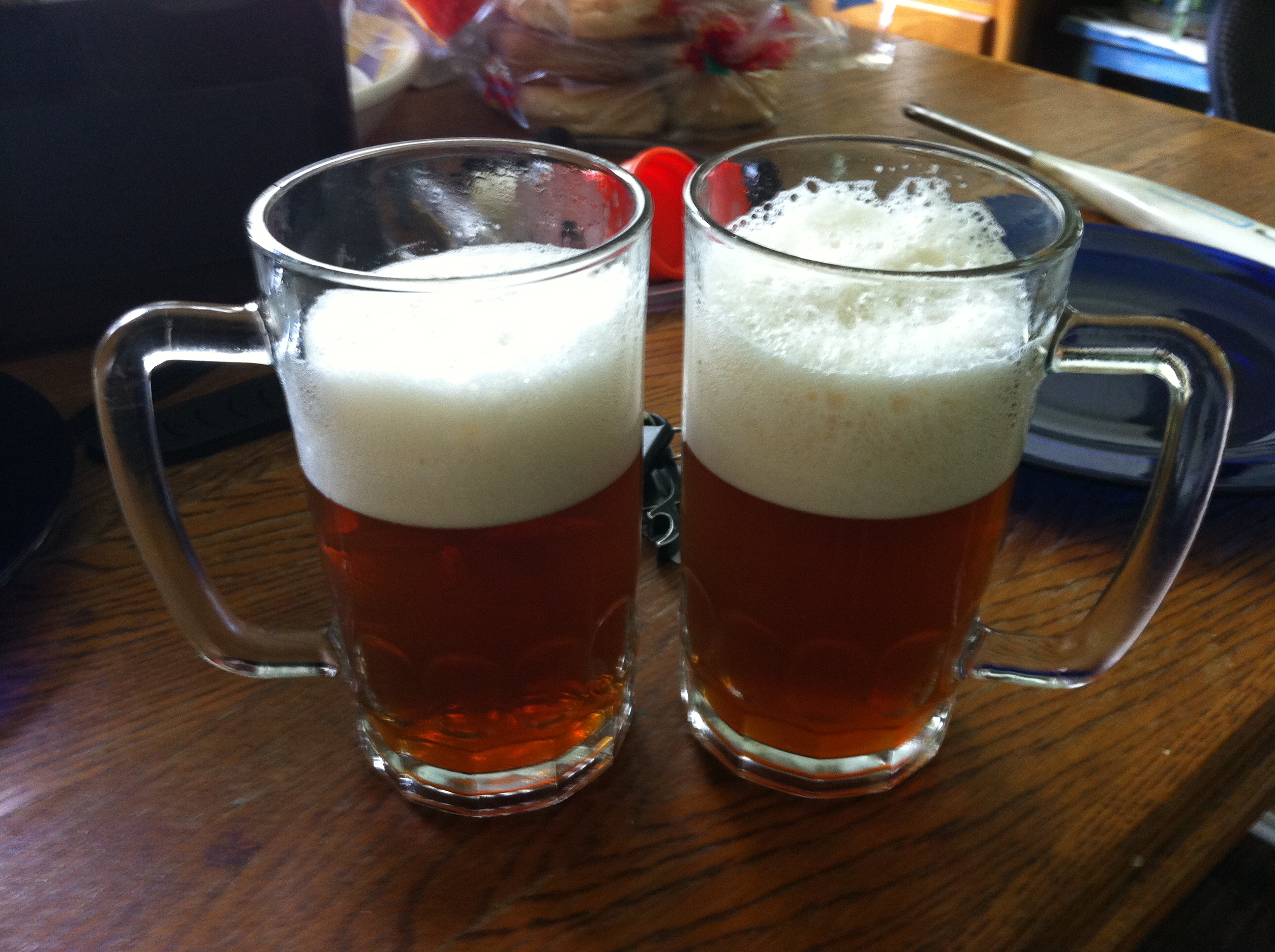
As we continue to search for our own original brewing recipes, look back at some of our favorite beers in attempts to figure out just how they do it.
So instead of being like our friends that weekend who kept posting Halloween Hangover updates on Facebook, we instead decided to spend it learning how to be contribute to these problems :-P.
Our clone beer of choice
Stone IPA from the Stone Brewing Company in Escondido, CA.
Why We Picked Stone IPA to Clone
Gag decided and already had the ingredients ready for it. That was good enough for me. Besides, it doesn’t take much to get me to want to clone an IPA. And an IPA as good as Stone’s, even easier. It’s rich. It’s spicy but not obnoxious. Pure IPA bliss. And I can’t see through it when poured into a glass. All great reasons.
It’s also a great sign that you’ve picked the right beer when you get halfway through the process and you decided you have to do a beer run just to have Stone IPA by your side as you finishing the clone batch.
Where We Got the Recipe
We got the recipe for Stone IPA from the book, “CloneBrews: Homebrew Recipes for 150 Commercial Beers.” We get a great deal of our recipes from this book.
Stone IPA Brewer Specs according to CloneBrews
Style: American IPA
Original Gravity: 1.071-1.072
IBU: 77
SRM: 6-7
ABV: 6.9%
Yield: 5 Gallons
Final Gravity: 1.017-1.018
Best Served at: 50* F.
When Ready: at carbonation. Will keep in a cellar for 6 months.
Stone IPA Ingredients according to CloneBrews – All-Grain Method
- Mash 13.3 lbs. American 2-row pale malt – at 151F for 90 minutes.
- 14 HBU of bittering hops ( – 90 minutes of boil (aka – the initial boil).
- 0.5 oz Magnum @ 15% AA
- 1.0 oz Chinook @ 10% AA
- Add flavor hops & Irish moss for the last 15 minutes
- Flavor Hops
- 1 oz Columbus
- Irish Moss
- 1 tsp.
- Add aroma hops for the last minute
- 1 oz. Centennial aroma hop
Things we substituted
Bittering Hops:
- Magnum Yakima Magnum Pellet Hops – 15.5% AA
- Nugget Pellet Hops – 12%
Things we did right
- Gave the kitchen a thorough cleaning the week before so the cleaning that night was minimal
- Double-checked our inventory
- Had great weather. It was 25 degrees colder outside than inside but the propane heater was close enough to the back door where we don’t believe we any significant temperature shock to the mash.
Things we didn’t do as right
Didn’t address the leak in the propane heater hose near the regulator – we leaked enough propane to where we couldn’t sustain a 2 hour flame and had to finish the boil process on the stove. The dip in temperature in the meantime probably contributed to our loss of Original Gravity in the final batch (1.042). — Gagster’s Edit:
I think the low OG is due to the mash temperature dropping over the 90 minutes. It was left unattended as we sorted out the propane burner and heating water for sparging.
Didn’t tell the lady at the brew store that we wanted to mill the grain ourselves – it’s my favorite part. And since I am at this point – to put it nicely – an understudy, there’s only so much I’m trusted to do outside of the smart at lifting heavy things aspect.
How it turned out
When it came out we didn’t get our full 5 gallons as anticipated. It was closer to 4 and a half. We attribute a lot of that to the inconsistent temperature causing the fact that more energy was needed to reach the boil temps.
Gag thinks the alcohol volume is low and it was way overhopped. I can’t disagree. I wonder if we were able to keep the temperate consistent between boils would the wort be more vibrant allowing the yeast more room to play.
How Did It Taste?
Awesome. Of course. It wasn’t a stone IPA. It was softer and sweeter but it was still awesome.




Leave a Reply
You must be logged in to post a comment.